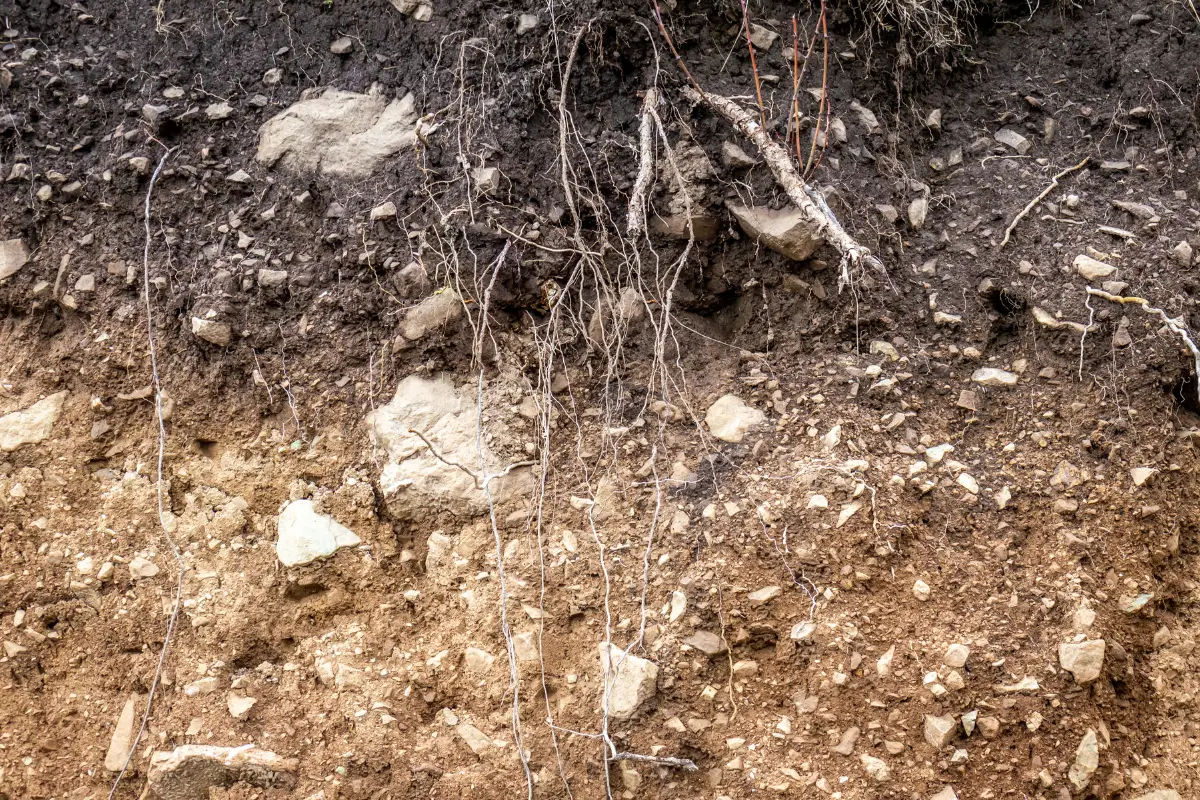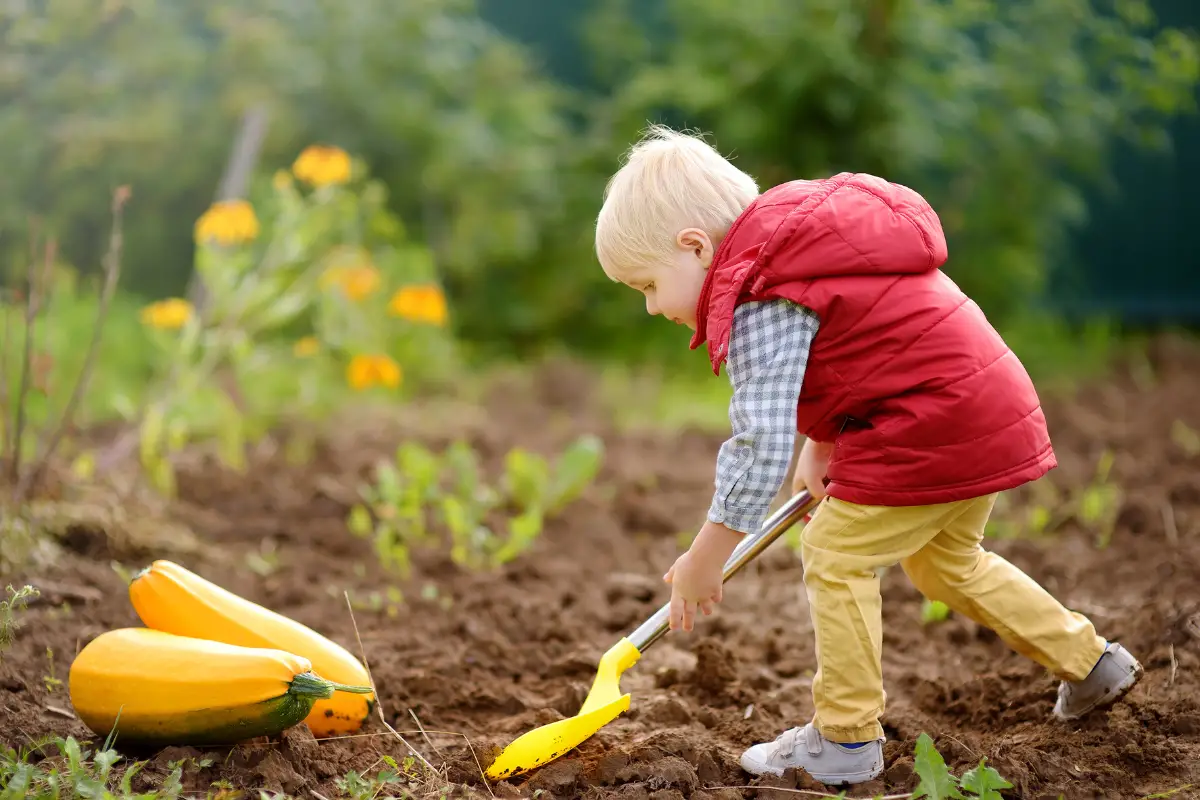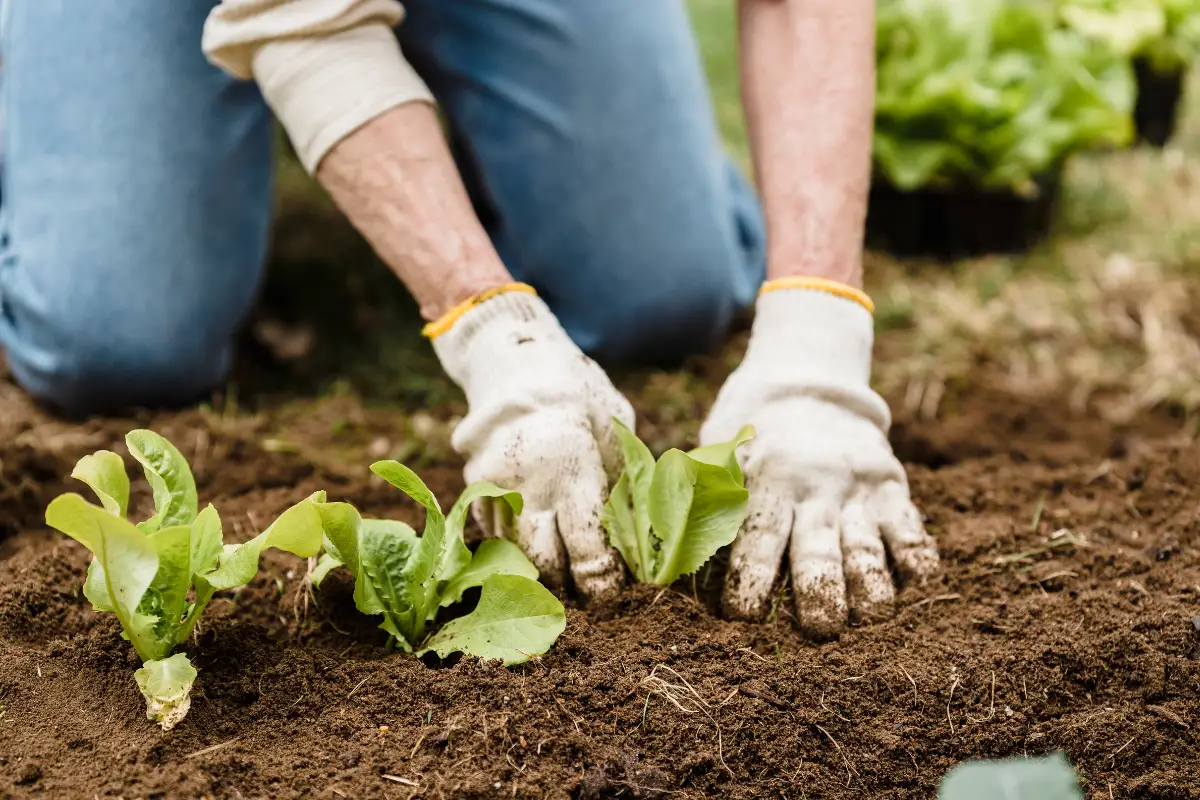Olive trees are a popular choice for gardeners and farmers alike, thanks to their versatile nature and the delicious fruit they produce.
However, planting an olive tree in the wrong location can result in a tree that fails to thrive and produce fruit. So, where is the best place to plant an olive tree?
According to olive tree experts, the ideal location for planting an olive tree is in a warm, sunny spot with well-draining soil.
Olive trees are native to Mediterranean climates, so they prefer hot, dry summers and cool, wet winters.
They also require plenty of sunlight to produce fruit, so a location that receives at least six hours of direct sunlight per day is recommended.
In addition to sunlight and soil, it’s important to consider other factors when choosing a location for your olive tree.
For example, cross-pollination is necessary for the tree to produce fruit, so planting multiple trees or choosing a location near other olive trees is recommended.
Additionally, olive trees can grow quite large, so it’s important to choose a location with plenty of space for the tree to grow and spread out.

Table of Contents
Understanding Olive Trees
Species of Olive Trees
There are hundreds of species of olive trees, but the most common species used for commercial purposes is the Olea europaea.
This species is native to the Mediterranean region and has been cultivated for thousands of years for its fruit and oil.
The Olea europaea species is further divided into several cultivars, each with its own unique characteristics and growth requirements.
Olive Tree Growth Requirements
Olive trees are hardy and can tolerate a wide range of temperatures and soil conditions, but they do have some specific growth requirements.
Here are a few things to keep in mind when planting an olive tree:
- Sunlight: Olive trees need plenty of sunlight to grow and produce fruit. They should be planted in a location that receives at least six hours of direct sunlight each day.
- Climate: Olive trees can grow in a variety of climates, but they do best in regions with mild winters and hot, dry summers. They are drought-tolerant and can survive in areas with low rainfall, but they do need regular watering during the first few years after planting to establish their root system.
- Soil: Olive trees prefer well-drained soil with a pH between 6.0 and 8.5. They can grow in a variety of soil types, but they do best in soil that is rich in organic matter.
- Spacing: Olive trees should be planted at least 20 feet apart to allow for their mature size. They can grow up to 30 feet tall and 20 feet wide, so it’s important to give them plenty of room to spread out.
- Pollination: Some olive tree cultivars are self-pollinating, while others require cross-pollination with another cultivar to produce fruit. If you are planting multiple olive trees, be sure to choose cultivars that are compatible for cross-pollination.
By understanding the species and growth requirements of olive trees, you can choose the best location to plant your tree and ensure that it has everything it needs to thrive.
Prices pulled from the Amazon Product Advertising API on:
Product prices and availability are accurate as of the date/time indicated and are subject to change. Any price and availability information displayed on [relevant Amazon Site(s), as applicable] at the time of purchase will apply to the purchase of this product.
Best Climate for Olive Trees
Olive trees require a subtropical, Mediterranean-like climate to thrive. They grow best in warm temperatures, tolerate drought, and are highly sensitive to frost.
The Mediterranean climate is perfect for olive tree growth because it has mild winters followed by sunny springs and hot summers.
The areas where olive trees are cultivated for commercial use must have an average annual temperature of 60-68 °F (15-20 °C).
Ideal average yearly temperatures for olive trees are anywhere between 12°C to 20°C (53°F to 86°F).
Temperatures above 32°C (89°F) in May and June, and temperatures above 36°C (43°F) are unfavorable for olive trees. However, the upper limit is around 40°C (104°F). There are some sorts of olives that can withstand temperatures up to 52 ° C (126 ° F).
In addition to temperature, the climate must also provide enough water for the olive tree to thrive.
Olive trees require well-drained soil and are drought-tolerant, but they still need regular watering to produce a healthy crop.
The ideal rainfall for olive trees is between 500 and 800 mm per year, with most of the rain falling in the winter months.
Ideal Soil Conditions for Olive Trees
Olive trees thrive in well-draining soil, which is often found in Mediterranean landscapes. This soil type helps prevent root rot and other issues caused by excessive moisture.
The presence of rocky or sandy soils in the Mediterranean region is another factor that makes it ideal for olive tree growth.
When planting an olive tree, it is essential to ensure that the soil is well-draining and rich in nutrients.
Olive trees prefer soil with a pH between 5.5 and 8.5, which is slightly acidic to slightly alkaline.
Prices pulled from the Amazon Product Advertising API on:
Product prices and availability are accurate as of the date/time indicated and are subject to change. Any price and availability information displayed on [relevant Amazon Site(s), as applicable] at the time of purchase will apply to the purchase of this product.
It is also important to avoid planting olive trees in areas with heavy clay soil, which can retain too much water and lead to root rot.
To prepare the soil for planting, it is recommended to mix compost or other organic matter into the soil to improve its fertility and drainage.
A layer of mulch, such as wood chips or leaves, can also be added to help retain moisture and suppress weed growth.
It is worth noting that olive trees can tolerate a wide range of soil types, including sandy, loamy, and even some clay soils, as long as they are well-draining.
However, olive trees do not tolerate soggy soil, which can lead to root rot and other issues.
Therefore, it is crucial to ensure that the soil is well-draining before planting an olive tree.
Proper Sunlight Exposure
Olive trees require plenty of sunlight to grow and thrive. They need at least six hours of direct sunlight per day, with eight to ten hours being ideal.
When planting an olive tree, it is important to choose a location that receives ample sunlight throughout the day.
It is also important to consider the intensity of the sunlight in the chosen location. Olive trees prefer moderate to high light intensity, but they can still grow in areas with lower light intensity.
However, if the tree is not receiving enough sunlight, it may not produce fruit or may produce less fruit than it would in a sunnier location.
When planting an olive tree, it is important to consider the surrounding landscape and any potential shade sources.
Trees, buildings, and other structures can all cast shade on the olive tree, reducing the amount of sunlight it receives.
It is best to choose a location that is free from any potential shade sources, or to plant the tree in a location where it will receive direct sunlight for the majority of the day.
Choosing the Right Location
When it comes to planting an olive tree, choosing the right location is crucial for its growth and development.
A well-chosen location will help the tree thrive and produce high-quality olives.
Here are some factors to consider when choosing the right location for your olive tree.
Backyard Planting
For backyard planting, it is important to consider the following:
- Sun exposure: Olive trees need plenty of sunlight to grow and produce fruit. Choose a location that receives at least six hours of direct sunlight per day.
- Soil: Olive trees prefer well-drained soil that is rich in nutrients. Avoid planting in heavy clay soil or soil that is prone to waterlogging.
- Space: Olive trees can grow up to 30 feet tall and spread up to 25 feet wide. Make sure you have enough space to accommodate the tree’s size and allow for proper air circulation.
Orchard Planting
For orchard planting, the following factors should be considered:
- Climate: Olive trees thrive in Mediterranean climates with mild winters and hot, dry summers. Choose a location with a similar climate for optimal growth.
- Soil: Olive trees prefer soil that is slightly alkaline with a pH between 7.0 and 8.5. Conduct a soil test to determine the soil’s pH level and make adjustments as needed.
- Irrigation: Olive trees require regular watering, especially during the first few years of growth. Choose a location with access to a reliable source of water.
In summary, choosing the right location for an olive tree is crucial for its growth and development.
Consider factors such as sun exposure, soil type, space, climate, soil pH, and irrigation when choosing the location for your olive tree.
By taking the time to choose the right location, you can ensure that your olive tree thrives and produces high-quality olives.
Watering and Fertilizing Needs
Olive trees are drought-tolerant and prefer well-drained soil. They do not like wet soil, so it is important to water them sparingly.
The frequency of watering depends on the climate, soil type, and size of the tree. In general, olive trees should be watered deeply once a week during the growing season.
The soil should be allowed to dry out between watering. Overwatering can lead to root rot, which can kill the tree.
During the first year of growth, olive trees should be watered more frequently to help establish a strong root system.
During the second year, the frequency of watering can be reduced. In the third year and beyond, olive trees can be watered once a week.
Fertilizing olive trees is important for optimal growth and fruit production. Olive trees require a balanced fertilizer that contains nitrogen, phosphorus, and potassium.
The fertilizer should be applied in the spring and early summer. A slow-release fertilizer is recommended to provide a steady supply of nutrients to the tree.
It is important not to over-fertilize olive trees, as this can lead to excessive vegetative growth and reduce fruit production.
A soil test can help determine the appropriate amount of fertilizer to apply. In general, olive trees require about 1 pound of nitrogen per year for every inch of trunk diameter.
Potential Threats and Diseases
Olive trees are susceptible to a range of pests and diseases that can affect their growth and yield.
Some of the most common threats are discussed below:
Olive Fruit Fly
The olive fruit fly (Bactrocera oleae) is a major pest of olive trees. The fly lays its eggs on the olive fruit, and the larvae feed on the flesh, causing significant damage.
The fly is most active during the summer months, and high temperatures and dry conditions can exacerbate the problem.
To control the olive fruit fly, growers can use insecticides or employ cultural practices such as removing infested fruit from the tree.
Bacterial Infections
Bacterial infections can cause significant damage to olive trees, and in some cases, can be fatal.
One of the most common bacterial infections is Xylella fastidiosa, which is spread by insects and can cause olive trees to wilt and die.
The disease has caused significant damage to olive groves in Italy and other parts of Europe, and has the potential to spread to other regions.
To prevent bacterial infections, growers can employ good cultural practices such as pruning infected branches, and avoiding the use of contaminated tools.
Fungal Infections
Fungal infections can also affect olive trees, and can cause a range of symptoms including leaf spots, cankers, and fruit rot.
One of the most common fungal infections is Verticillium wilt, which is caused by the fungus Verticillium dahliae.
The disease can cause significant damage to olive trees, and can be difficult to control.
To prevent fungal infections, growers can employ good cultural practices such as pruning infected branches, and avoiding the use of contaminated tools.
Other Pests
Other pests that can affect olive trees include mites, scales, and aphids. These pests can cause a range of symptoms including leaf distortion, yellowing, and stunted growth.
To control these pests, growers can use insecticides or employ cultural practices such as removing infested leaves from the tree.
Conclusion
In conclusion, planting an olive tree requires careful consideration of several factors to ensure its successful growth and fruiting.
The best location for an olive tree is in a warm, sunny spot with good soil drainage. It is important to avoid planting olive trees in areas with high humidity or frost, as this can cause damage to the tree and reduce its yield.
When planting an olive tree, it is recommended to test the soil to ensure it is well-draining and nutrient-rich.
If the soil is not suitable, it may be necessary to grow the tree in a container or amend the soil with organic matter.
Olive trees require regular watering, especially during the growing season, and benefit from a balanced fertilizer application.
It is important to choose the right variety of olive tree for the climate and growing conditions in the area.
Some varieties are more cold-hardy, while others are better suited to warmer climates.
Additionally, it is important to consider the space available for the tree to grow and mature, as well as the potential for cross-pollination with other olive trees in the area.
- How to Dry Basil Leaves: A Professional Guide
- Is an Avocado a Fruit or Vegetable? Simple Answer and Explanation
- Does Pineapple Have Seeds? Exploring the Anatomy of Pineapples
- Blooming Through Winter: Can I Grow Vegetables Indoors in the Winter?
- What Can You Grow in a Greenhouse All Year Round: A Guide to Year-Round Greenhouse Gardening
- Are Blueberries Blue? Debunking the Myth of Their Color






























